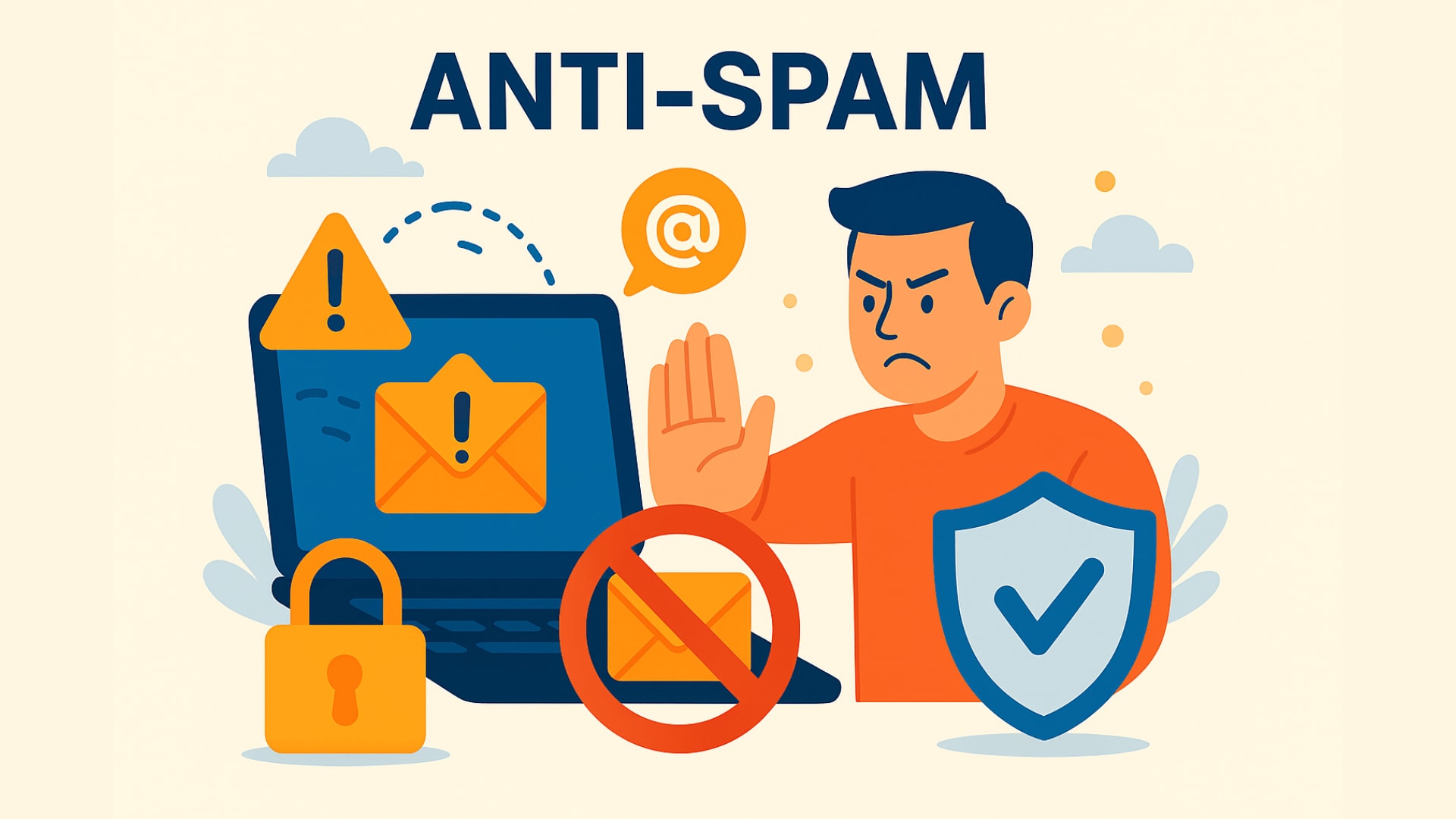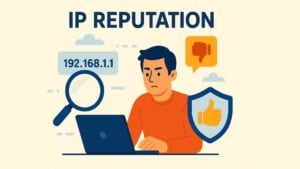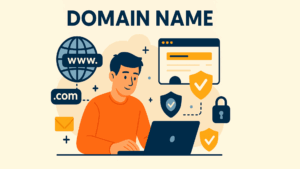
Inboxes fill up fast. Not just with important updates or friendly messages, but often with waves of unwanted and sometimes harmful emails. This flood of unsolicited content is commonly known as spam. And the solution that keeps our communication channels clean and secure? Anti-spam technology.
Table of contents
- Defining Anti-Spam
- Why Businesses Need Anti-Spam Protection
- How Anti-Spam Technology Works
- The Techniques Behind Spam Detection
- Beyond Email: The Broader Spam Problem
- Building a Strong Anti-Spam Strategy
- Selecting the Right Anti-Spam Solution
- The Cost of Ignoring Spam
- Conclusion
- FAQ – Frequently Asked Questions
Defining Anti-Spam
At its core, anti-spam refers to all technologies, strategies, and practices used to detect, filter, and prevent spam from reaching users. It isn’t just about convenience. Anti-spam systems are a vital part of cybersecurity, designed to protect individuals and organizations from scams, phishing, and malware attacks often hidden in spam messages.
Spam comes in many forms. While most people associate it with email, spam also infiltrates SMS, social media, messaging apps, and website forms. Anti-spam is the defense mechanism that keeps this noise out, ensuring users receive only legitimate, secure, and relevant content.
Why Businesses Need Anti-Spam Protection
For organizations, spam is more than a nuisance. It’s a business risk. Unchecked, it leads to lost productivity as employees sift through irrelevant messages. More critically, spam is a leading vector for cyberattacks. Phishing attempts disguised as routine communications can trick even the most cautious recipients into handing over sensitive data or installing malicious software.
Implementing robust anti-spam protection isn’t optional; it’s essential. Effective filters help maintain communication efficiency, protect company data, and ensure compliance with data protection laws like the GDPR. For businesses, a secure inbox is not just a convenience – it’s a necessity.
How Anti-Spam Technology Works
Behind the scenes, anti-spam technology works through a complex interplay of rules, filters, and machine learning. When an email is received, it goes through a series of checks. The system evaluates its source, examines the content, scans for suspicious links or attachments, and compares it to known patterns of spam behavior.
Advanced systems also utilize AI to adapt and learn from new threats. This proactive approach helps detect emerging spam tactics that traditional filters might miss. The goal is to strike a balance: filter out harmful or irrelevant messages without blocking legitimate communication.
The Techniques Behind Spam Detection
Multiple layers of technology support effective anti-spam protection. Filters often begin by checking sender reputation and authenticity. This involves verifying if the message was sent from a known and trusted IP address or domain. Email authentication protocols like SPF (Sender Policy Framework), DKIM (DomainKeys Identified Mail), and DMARC (Domain-based Message Authentication, Reporting & Conformance) are used to confirm the identity of the sender and prevent domain spoofing.
Message content analysis is another key technique. Anti-spam systems scan the email body and subject lines for suspicious keywords, phrases, and formats. Bayesian filtering, a statistical method, calculates the probability of a message being spam based on previously flagged content. Heuristic analysis looks for structural anomalies in email headers and formatting.
URL reputation analysis plays a critical role, especially since spam messages often contain links to phishing sites or malware downloads. These systems check embedded URLs against real-time blocklists of known malicious sites or analyze them for suspicious behavior.
More advanced systems incorporate machine learning and behavioral analysis. These technologies recognize emerging spam tactics and adapt automatically. They track user behavior and global spam trends to continuously update their detection models, reducing false positives and increasing accuracy.
The effectiveness of these techniques lies in their ability to work together. A layered approach ensures that if one method misses a threat, others can catch it.
Beyond Email: The Broader Spam Problem
Spam isn’t limited to emails. Messaging platforms, social networks, and website forms are frequent targets for spammers. Fake comments, bogus registrations, and automated abuse of online services are all symptoms of a broader spam epidemic.
In these environments, CAPTCHA solutions play a vital role. They act as gatekeepers by distinguishing between human users and bots. Captcha.eu, for example, provides a GDPR-compliant CAPTCHA that is WCAG 2.2 AA certified and designed to be both secure and user-friendly. It combines behavioral analysis with privacy-focused technology, ensuring that websites stay protected while remaining accessible to all users.
Building a Strong Anti-Spam Strategy
A successful anti-spam strategy involves more than deploying a single tool — it requires a comprehensive, multi-layered approach that combines technology with user education and policy enforcement. First, organizations should integrate robust anti-spam filters at all entry points — email servers, web forms, and messaging platforms. These filters should be updated frequently to adapt to evolving spam techniques.
Second, employee awareness plays a vital role. Users should be trained to recognize phishing attempts, avoid clicking on suspicious links, and report strange emails to IT or security teams. Awareness campaigns and regular training sessions can dramatically reduce the chances of successful spam-based attacks.
Third, organizations should implement email authentication policies such as SPF, DKIM, and DMARC to prevent spoofing and build trust with email recipients. These policies help receiving mail servers verify that messages claiming to come from your domain are legitimate.
Additionally, regular audits and penetration testing can identify weak points in your email infrastructure. Keeping detailed logs and monitoring suspicious patterns can help detect and respond to potential threats early.
Lastly, using complementary tools like user-friendly CAPTCHA systems on web forms — such as the solution from captcha.eu — can mitigate spam beyond email, protecting websites from bot abuse and ensuring accessibility for all users.
Selecting the Right Anti-Spam Solution
Choosing a reliable anti-spam service involves evaluating its detection accuracy, ease of integration, customizability, and compliance with data protection standards. Some businesses may prefer on-premises filters, while others opt for cloud-based services. Either way, a good solution should offer real-time updates, detailed analytics, and the ability to minimize false positives.
Security teams must also consider how anti-spam tools interact with other protective layers like antivirus programs, firewalls, and endpoint security. Together, these elements form a cohesive shield against cyber threats.
The Cost of Ignoring Spam
Underestimating spam’s impact can be costly. From data breaches and downtime to legal penalties and reputational damage, the consequences are far-reaching. On an individual level, spam can lead to identity theft or financial fraud. For businesses, the risks scale exponentially with the volume of communications and the value of the data being handled.
Taking action means more than just installing a filter. It means creating a digital environment where threats are anticipated, and responses are immediate. Spam may never disappear completely, but with the right tools and awareness, its impact can be dramatically reduced.
Conclusion
Anti-spam technology is a cornerstone of modern cybersecurity. It defends not just against inconvenience, but against real and growing threats. As spam techniques evolve, so too must our strategies to combat them.
With smart filters, regular updates, educated users, and complementary tools like CAPTCHA for non-email spam, businesses can ensure a safer, cleaner digital experience. In this fight, vigilance is everything—and the right anti-spam measures make all the difference.
Solutions like captcha.eu demonstrate how security and accessibility can go hand in hand, making it easier for organizations to protect their digital platforms without compromising user experience.
FAQ – Frequently Asked Questions
What does anti-spam mean?
Anti-spam refers to the set of practices, filters, and technologies designed to block or manage unwanted communications—commonly known as spam. These systems aim to differentiate harmful or irrelevant messages from legitimate ones, protecting users from scams, phishing, and malware while preserving email performance and reliability.
Why is anti-spam protection important for businesses?
It prevents cyberattacks, reduces phishing risks, protects data, and ensures communication efficiency by keeping inboxes clean.
Is spam only an email problem?
No. Spam also affects SMS, social media, and website forms. Bots use these channels to spread scams or abuse services.
Can CAPTCHA help prevent spam?
Absolutely. While anti-spam tools filter out malicious or unsolicited emails, CAPTCHAs help protect websites against spam bots that flood contact forms, comment sections, and registration portals. Solutions like captcha.eu take this a step further by offering a WCAG 2.2 AA–compliant, GDPR-friendly CAPTCHA system. It blends accessibility with robust bot protection using behavioral signals and cryptographic verification—without compromising user experience.
How does anti-spam software work?
Anti-spam software uses several layers of defense. It checks sender authenticity using SPF/DKIM/DMARC, analyzes message content for common spam traits, scans for harmful URLs or attachments, and applies machine learning to adapt to new threats. Advanced systems even track user behavior to better identify unusual communication patterns and block suspicious emails in real time.
100 free requests
You have the opportunity to test and try our product with 100 free requests.
If you have any questions
Contact us
Our support team is available to assist you.




